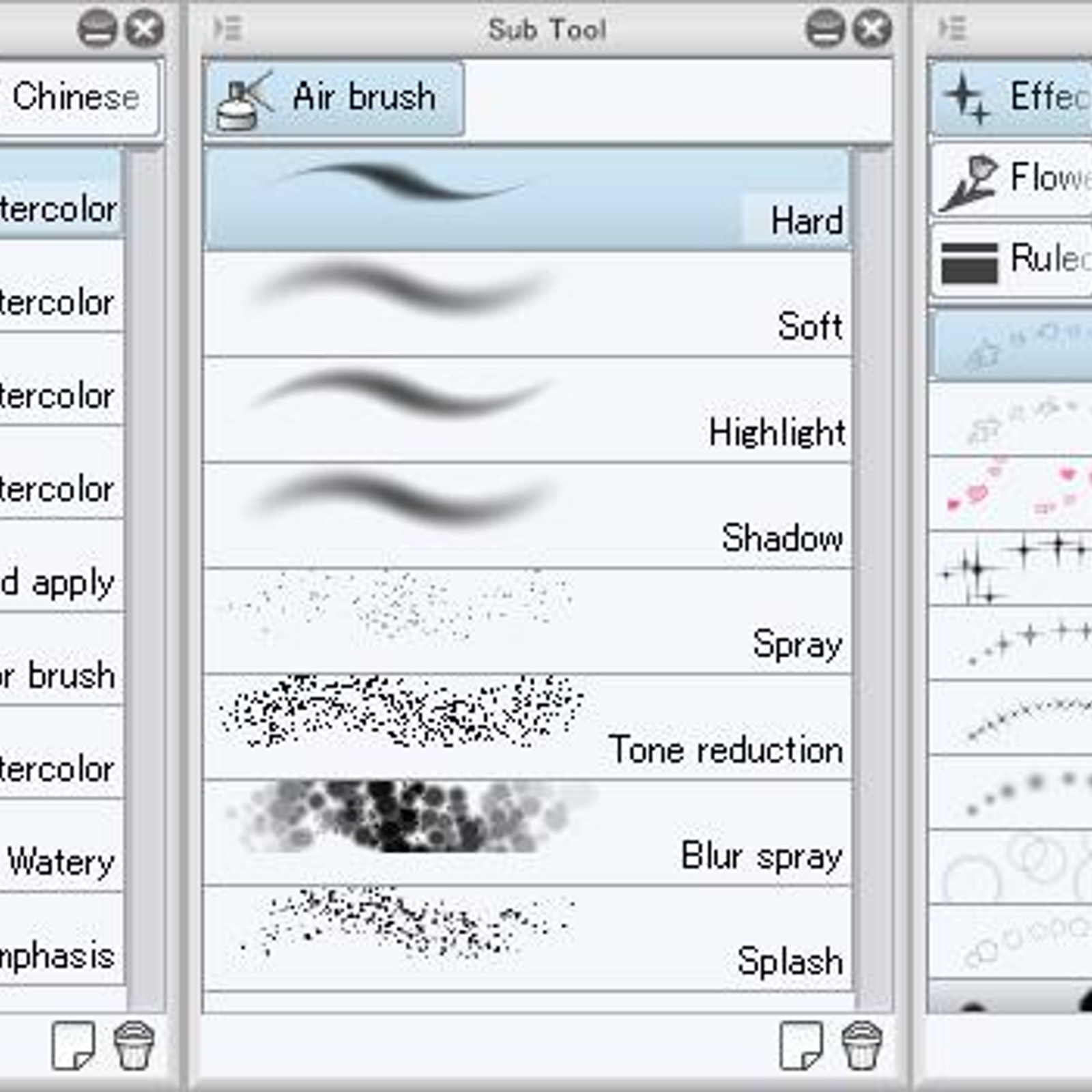- Linework Tools - SAI Paint Tool
- How To Reset Tools?
- Download Curve Sai Paint Tool Crack
- See Full List On Btlasopa337.weebly.com
- Curve Tool / Line Tool. This tool draws curves/lines in linework layer. This is only supported by linework layer. Additionally this tool also support the function of the control point tool with combination of Ctrl/Shift/Alt keys. Double Clicking, Right Clicking, Enter, Esc.
- Line/Curve Tool. This tool is used to draw lines and curves. These two abilities are grouped into a single tool because a line is actually a perfectly straight curve. In other words, this tool always draws curves, where a straight line is a subset involving no actual curvature. Drawing a line is straightforward: click where the line.
Sep 23, 2018 PaintTool SAI free download: Paint editor software for Windows. Safe PC download for Windows 32-bit and 64-bit, latest version. Layers add new vector layer curve tool. 2011-04-17 03:44:15.
This tool is used to draw lines and curves. These two abilities are grouped into a single tool because a line is actually a perfectly straight curve. In other words, this tool always draws curves, where a straight line is a subset involving no actual curvature.
Drawing a line is straightforward: click where the line begins and drag the mouse pointer to the end point. Releasing the mouse button ends the 'drawing' phase.

Using the
When the drawing phase is ended, four control nubs appear on the line and the four-way move icon appears just off the end point of the line.
The
If a single, straight line is desired, press the
Holding down the
If a curve is desired, drag the control nubs to a new location by clicking and dragging.
Moving a Line/Curve

Before a Line/Curve is committed to the canvas, it can be moved anywhere on the canvas. Click and drag the pulsing four-arrows-in-a-square icon (see diagram below) using the
The keyboard arrow keys
Rotating a Line/Curve
Before a Line/Curve is committed to the canvas, it can be rotated about its geometric center.
Rotate the Line/Curve about the center using the
If the
The keyboard arrow keys
Committing a Line/Curve to the canvas
Commit a Line/Curve to the active layer and exit editing mode using any one of these methods…
- Press the
Enter key - Click outside of the bounding box of the current Line/Curve.
- Click Finish in the
Tool Bar - Draw a new Line/Curve.
Curve Types
There are two icons in the
If the Left icon (Spline) is selected, the line will be curved using cubic spline interpolation. It will always continue through each of the
If the Right icon is selected (Bézier), a Bézier curve results. With this curve type, the curve will extend from the first or origin
Switch between curve types by toggling between the two
Brush Width, Line Style and Fill
Lines and curves are subject to the Brush settings in the
The Line/Curve can have different start cap, dash style, and end cap. The start- and end-caps can be flat (normal), one of two arrow head types, or rounded. The dash style can be either solid or a combination of dashes and dots.
Using
Lines and curves can be rendered using a
Fills utilizing a fill style will make use of both the
Antialiasing
There are two antialiasing modes associated with the
Linework Tools - SAI Paint Tool
These settings determine whether the line is rendered in a clip-to-pixel mode or not.
How To Reset Tools?
When
When
Antialiasing can be switched on or off via the
Download Curve Sai Paint Tool Crack
Blend Modes
See Full List On Btlasopa337.weebly.com
Lines and curves can be applied using a